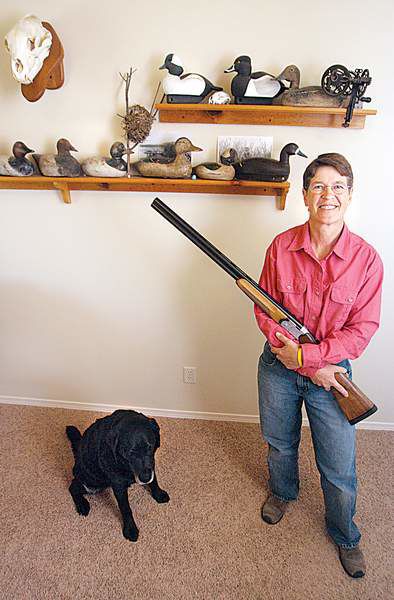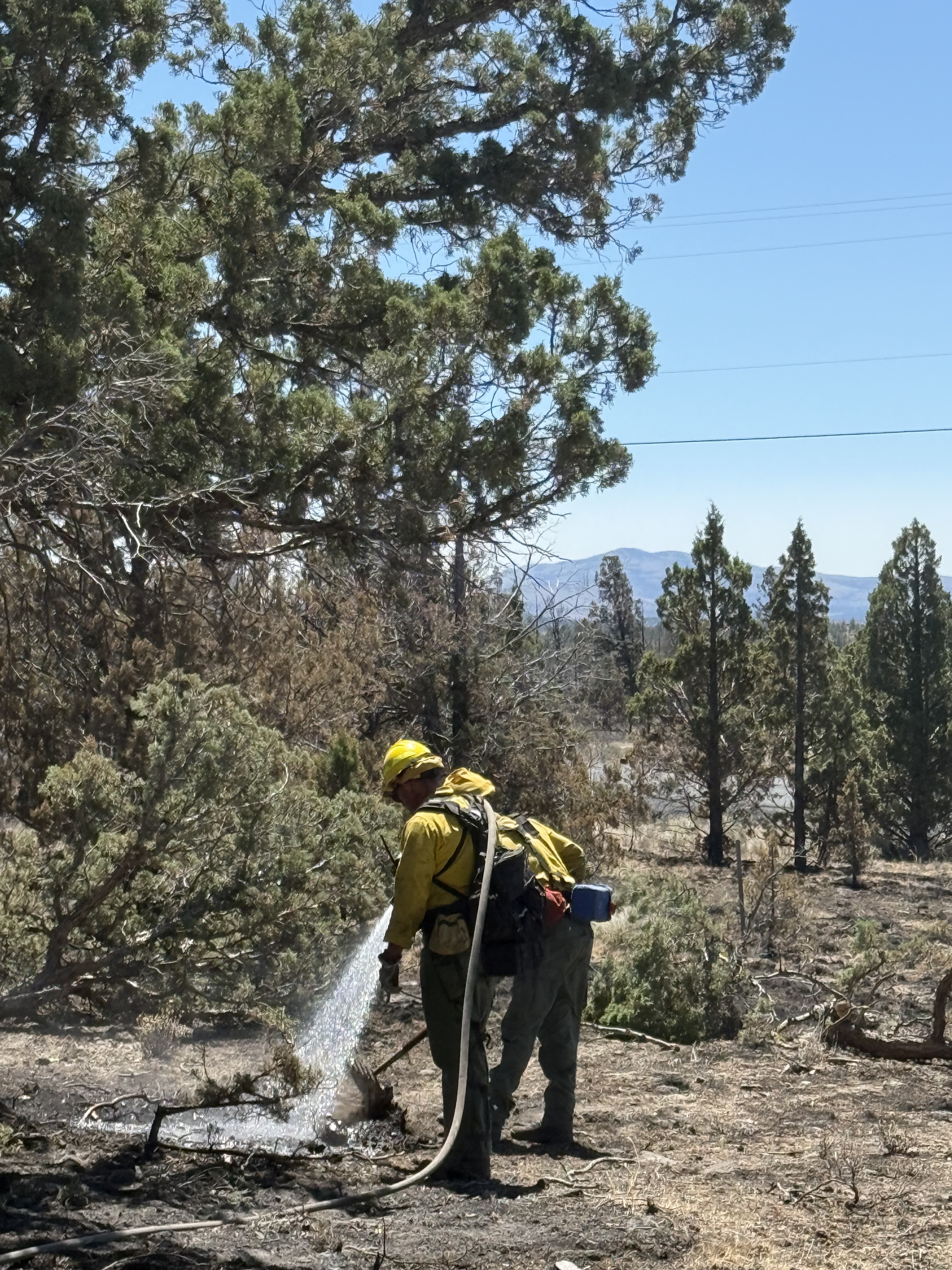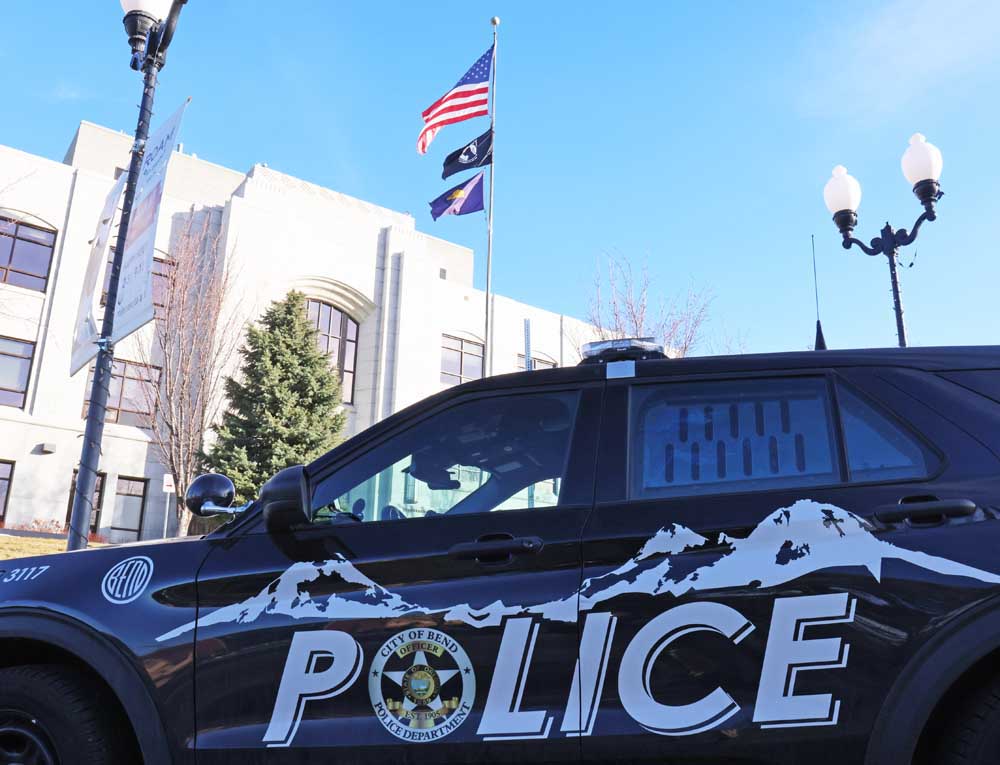Blogger aims at women who hunt
Published 5:00 am Monday, August 25, 2008

- Terry Scoville, shown with her dog, Jet, in front of a bear skull and some antique duck decoys at her home south of Bend on Friday, has created a blog, Women’s Hunting Journal, to encourage other women to enter the field.
At age 11, Terry Scoville was finally old enough to join her father trudging through the Oregon forest, guns slung onto their camouflaged backs. The early fall air was warm and laced with the smell of star thistle, and painted leaves cloaked the ground. The two moved through cornfields taller than Scoville’s head and settled beside a flooded field, waiting for the whistle of wings in the air.
The experience, Scoville would later post on her blog, reassured her that her father would support her interest in a sport that doesn’t engage most daughters.
Trending
Scoville is now 49, but she remembers the butterflies in her stomach at being included during those first hunting trips. She also remembers feeling unusual: a short girl wielding a Belgian-made side-by-side 410 shotgun, an early Christmas present from her father that would help her bag her first dove.
“It was a novelty having a girl in the field,” Scoville said last week in Bend.
She says the recent rise in women hunters has increased their representation in the industry, but she’s still a member of the minority. So she is using the blogosphere to connect with more women hunters and encourage their entrance to this male-dominated sport.
She started her blog, womenshuntingjournal.blogspot.com, in April, at a friend’s urging. She’s been pleasantly surprised to find more women like her, searching for fellow hunters online.
“It’s nice that there’s a community of women hunters out there,” Scoville said, adding that she’s already made plans to meet one woman, whom she found through the blog, for a hunting trip this year. She hopes that’s just the beginning.
Bucking the trend
Trending
The hunting and fishing industry has seen overall declines in participation for at least the past 10 years, according to data from Oregon Department of Fish and Wildlife, or ODFW.
Many factors contribute to the decline in hunting, including access limitations, says Mark Newell, outdoor skills education coordinator at ODFW in Salem. From what he’s read, hunting is increasingly competing for people’s recreational time. Now more than ever, residents also participate in activities like water sports, leaving less time for hunting.
On the other hand, women are starting to participate more in a sport they watched their fathers, brothers and husbands enjoy.
Women still represent a small portion — around 14 percent — of overall hunters and fishers, the department reported, but their numbers are heading north.
The percentage of women hunters hovered at 13 percent between 1994 and 2002, according to ODFW, but saw recent increases in 2006 and 2007 to 14 percent.
“More women are getting into both hunting and fishing, but not enough to stop the decrease the nation is seeing in those (sports),” Newell said. “Women are a big target right now, not for just fish and wildlife agencies, but for makers of (hunting gear).”
Hunting equipment manufacturers are pumping out more products designed for women, he said, including guns that are lightweight and ergonomically correct and clothing in women’s sizes.
Newell helps manage the Oregon chapter of a national program called Becoming an Outdoors-Woman. Its purpose is to get more women involved with outdoor-type sports, from hunting to kayaking.
Many women join the free informational classes because they are searching for other women to share their hunting interests, Newell says.
“With women’s education and income increasing, a lot more are independent now,” Newell suggested. “They saw their brothers and dads hunting, so they are starting to do it on their own.”
Scoville says she still receives quizzical looks when shopping at a sporting retailer, where she searches for clothing to fit her small frame.
“Camo is my favorite wardrobe,” Scoville joked. “I don’t wear makeup, but I wear camo.”
Resources for women
Bend resident LaDel Jones, 55, is Scoville’s friend and a life-long hunter. Jones prefers big game to Scoville’s fowl, but says the women became fast friends due to their common interest in hunting.
Like Scoville, Jones grew up in a hunting family and enjoys both the sport of hunting and the excuse to be in the quiet woods.
Over the years, Jones has seen more women joining their husbands in hunting, including another couple she hunts with. She thinks women’s involvement is linked to the industry acknowledging women as participants.
“There isn’t that, ‘Oh, my gosh, you hunt?’ reaction like I got when I was growing up,” Jones said, adding that she’s no longer hard up for a female hunting partner.
Jones thinks that Scoville’s blog will reinforce the work of Becoming an Outdoors-Woman, in which she has been involved.
“What I liked being in BOW is being exposed to women who want to do it but didn’t have an avenue,” Jones said. “(Scoville’s) blog gives them another source of information that can make the sport available to them.”
A way with words
When Scoville isn’t hunting, she works as a custom woodworker, creating tables, chairs, drawers and benches. As with her interest in hunting, she enjoys working with organic materials and crafting with her hands.
Although Scoville has no formal writing experience, her love of storytelling shines on her blog, once a friend showed her how.
“I was scared to death,” she recalls, “and intimidated by computers and my lack of skills.”
But in April of this year, she launched the Women’s Hunting Journal, now with roughly 90 posts.
Her colorful prose has attracted a wealth of support from the blogging community, Scoville said. Her site is listed on BendBlogs.com and Outdoorbloggerssummit.blogspot.com.
With a little help, she’s expanded the blog to include links to her favorite hunting Web sites, lists of hunting guides and books, descriptions of hunting products she makes and other resources.
Since it began four months ago, Women’s Hunting Journal has attracted viewers from throughout the country.
“It’s been really nice to find that there’s an interest in reading these stories,” she says. “And it’s good for me to be able to re-live the pleasure of my experiences.”
In addition to narrating exciting hunting trips with her friends or with her black English Labrador retriever, Jet, Scoville discusses issues of ethics and safety, which are hot topics in the hunting industry.
One post explores at what age a child can hunt. Scoville suggests that anyone who wants to hold a gun needs maturity and thorough safety instruction.
“A kid needs to know what death is,” she says. Her blog included hunters’ safety links.
In another post, she poses the question, “Why hunt?” Her discussion touches on the ethical issues surrounding sport hunting.
“There was a period in which I took nine years off from hunting,” Scoville said last week. “I just didn’t like the reasons I was in the field.”
That was 17 years ago, and Scoville said her hunting was “a youthful, ego-driven mission to get the daily limit (of kills).”
“I missed the point of being out there,” she says. The sport isn’t about bagging the most animals. Rather, it’s about being connected to the earth and working hard and being dog-tired at the end of the day.
‘It takes me to great places’
“(The point is that) it takes me to great places,” she said, “and the solace of those places renews my spirit.”
She says hunters often get a bad rap, but most of them respect the environment, hunt ethically and want to conserve nature’s beauty.
She’ll spend hours looking for a fallen or injured animal that she’s shot and lost, sometimes returning the next day to search. That commitment to recovery gives Scoville great pride.
Once, after tracking a flock of birds with Jet, Scoville sat near their watery home and watched. She was so close that she could hear them chirping and clucking to each other, unaware that a skilled hunter with a gun was listening in. She decided not to shoot.
“The dog gave me a dirty look, but I didn’t want to break the solace,” Scoville said.
Who’s hunting?
From 1994 to 2007, the number of overall Oregon hunters decreased more than 3 percent. During that same time, the number of female hunters increased by 1 percent. Still, women only make up 14 percent of the overall hunting population in Oregon.
Source: Oregon Department of Fish and Wildlife








